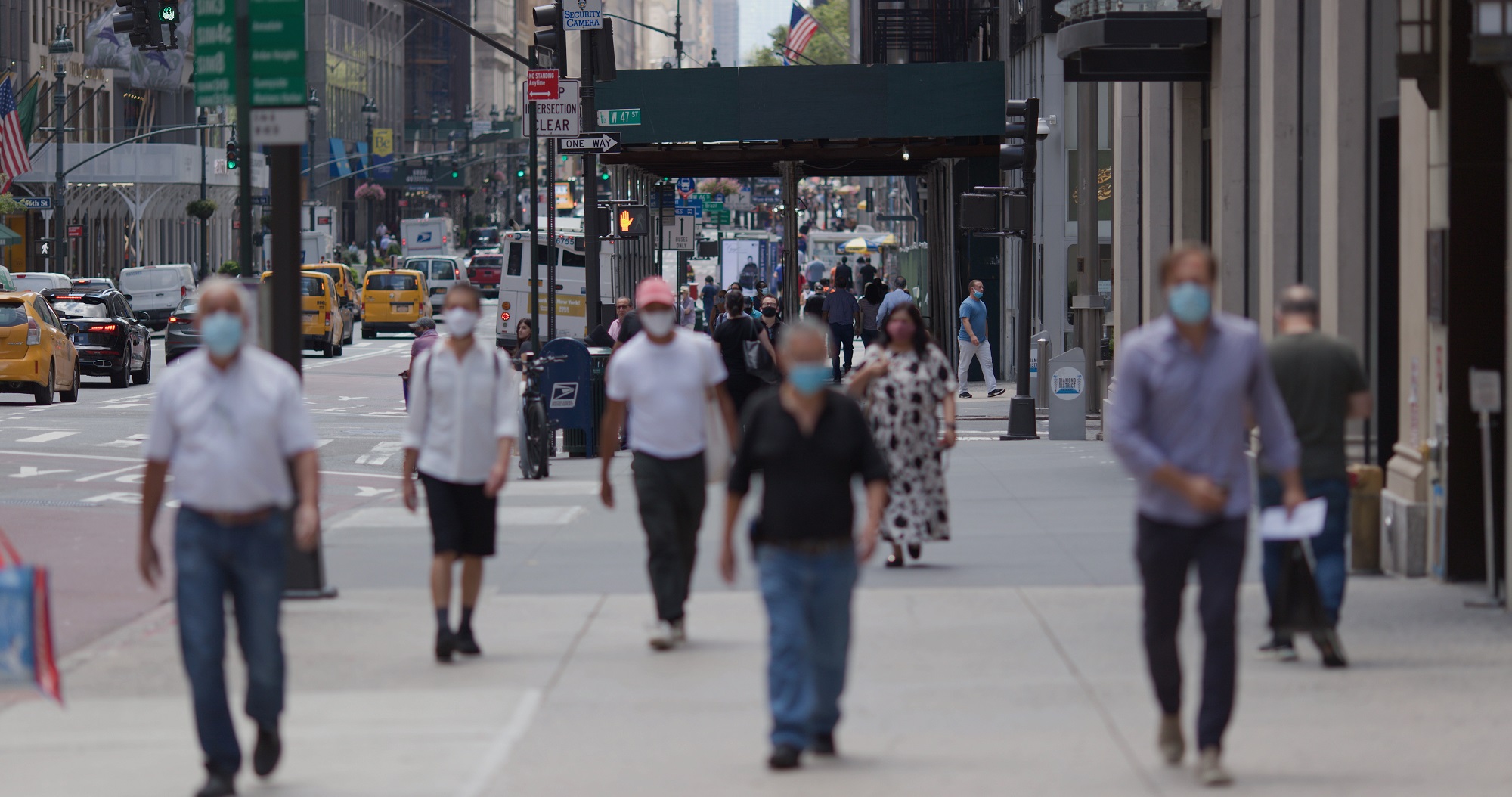As part of the seemingly ceaseless undertow of the COVID-19 pandemic, there have been calls from the public and academia alike for the reshaping of the built environment – our cities, towns, and neighborhoods – towards innately “healthier” ends. The topic of density has been at the heart of many of these discussions.
Within the more-superficial realms of these exchanges, specifically those anchored in knee-jerk haste, historical stereotypes of city vs. suburb have been brought back to life. The city has been typecast once more as the dark, gritty, bubbling cauldron of infection, and the suburb as its verdant and sanitary counterpart. Or, inversely, the suburb has been typecast as the heart of sedentary, car-oriented, infirmity-prone lifestyles, and the city as its active, pedestrian-oriented, vigorous counterpart.
The pandemic however, does not fit so easily within the narratives of these stereotypes. And although the concept of population density is an easy scapegoat for the impact and spread of the virus, in reality it is neither the villain nor the savior of this present-day story. There are high-density cities that have been remarkably successful in negating the pandemic, and others that have been tragically unable to control the spread. A similar pairing can be read across low-density suburbs.
Let us dispense with the exaggerated focus on density and consider some other aspects of the built environment that have borne causal weight on the societal impacts of COVID-19. For instance, infrastructure and connectivity.
The infrastructure in question is that of healthcare. Research has shown that areas with access to better healthcare infrastructures tend to exhibit lower mortality rates in regards to COVID-19. Higher density areas in turn tend to have better healthcare infrastructures when compared to their lower-density counterparts. It’s critical to note however, that while such higher density areas tend to exhibit lower mortality rates, they do not tend to exhibit lower infection rates.
The word I keep italicizing here, is tend. Cities, towns, suburbs – these are not monolithic entities. There are discrepancies and inequities within them in terms of access to existing healthcare infrastructures, as well as heterogeneities within the infrastructures themselves. Consider for instance, the case of New York City, and the vastly increased mortality rates observed in the Bronx. Wherever you live, whether in a high-density city, or a low-density suburb, if you do not live in the right part of town, or are not part of the more-affluent quintiles of the city, the chances of faring well with COVID-19 begin to decrease drastically.
And that is really the issue here: equity within urban and suburban territories.
What COVID-19 has highlighted with shocking clarity is that the significant inequities embedded within our cities, towns, and suburbs, play a significant role in how the pandemic’s impact spreads across the land. Mortality rates have not followed previously-hypothesized patterns of density; but they have followed previously-noted patterns of inequity.
Connectivity, how an area’s socioeconomic networks are woven together, has a likewise impact on the spread of the virus. Areas which experience greater movements of people, and higher interactions between those people, tend to exhibit higher transmission rates of the virus. These socioeconomic networks can weave across neighborhoods, across cities, and also across regions. They can be global in reach. Networks that are more expansive and more intricate, tend to support a far-reaching and fine-grained spread of the current pandemic.
One question to consider in the context of such connectivity is what happens when a quarantine is set in motion. Under a certain set of pressures, large supply chains and employment structures, which seem so resolute and sturdy, can prove to be surprisingly vulnerable and inflexible. When these large networks fluctuate, localities which were reliant on them can be left significantly debilitated. This makes localized quarantine much more challenging, as the debilitated locality may be lacking a critical degree of self-sufficiency. To reiterate, however, the issue here isn’t density. High-density and low-density localities can both lack critical self-sufficiencies, their socioeconomic networks can be equally vulnerable.
A second aspect of connectivity overlaps the issue of equity. Namely, the negative connectivities caused by overcrowding. Overcrowding, it is important to note, is not the same as density. Eight people living in a studio apartment is overcrowding, regardless of whether the apartment is in the suburb or the city. Whereas two people living in a small two-bedroom apartment in a twenty-story building, falls under the category of density.
Consider, for instance, the scenario of worker housing in dormitories in Singapore and the rapid rise of COVID-19 cases therein. Migrant workers sleeping in bunkbeds, sometimes twelve to a room, in oftentimes poorly ventilated, unhygienic environments is an ideal framework for spreading a pandemic. What is of concern here, is unwanted connectivities created not by density but overcrowding — unwanted connectivities imposed by market and policy forces, which must be corrected by counteractive measures.
A third aspect of connectivity is the overlap between humans and the wild (the wild, as opposed to the productive and tamed hinterland). In this case, connectivity means the invasion of our socioeconomic networks, for purposes of food or resource extraction, into areas of high untamed biodiversity. As our cities, towns, and suburbs continue to expand, the greater our incursions into the wild become. These incursions take place through the expansion of high and low density settlements alike, although perhaps via different dynamics. Regardless of the source, as we cross and blur these boundaries with greater aggression, not only do we increase the likelihood of cross-species transmission of diseases but, more importantly, we destabilize these systems of biodiversity. This destabilization critically impacts the broader biosphere upon which we fundamentally rely and, on a more minute level that is of particular import in the context of this pandemic, we also undermine the regulatory mechanisms keeping various viruses, diseases, and carriers of these elements in the wild at bay.
The various impacts of COVID-19 have launched a widespread call to action for the reshaping of our built environment, from the scale of public spaces to urban and regional territories, in order to better prepare for the next pandemic. This discursive call is disheartening in two regards. First, the reshaping of the built environment around a future inevitable pandemic implies that our governments – and the public – will fail to act responsibly in the face of another such event, and the built environment will be looked upon to compensate for these failings. Perhaps instead of reshaping the built world with the assumption of the ineptitude of our pandemic policies, we should address the limits of our policies and institutional capacities. This is in reference to quarantine protocols, contact tracing systems, political mechanisms that allow us to enact and refine policies, institutionalized networks that allow for rapid collaboration between scientists, researchers, policy makers, and the public, and so on. Second, a significant portion of the desire to reshape the built world has centered on the superficial discussions of urban vs. suburban stereotypes, anchored by false conceptions of density. What has been broadly overlooked, possibly because of the difficult personal and societal work they entail, are the complex issues of equity, multi-scalar socioeconomic networks, and the collision between the human and non-human world. These are the issues that have been exposed by COVID-19 and are in critical need of our collective attention.
© IE Insights.






